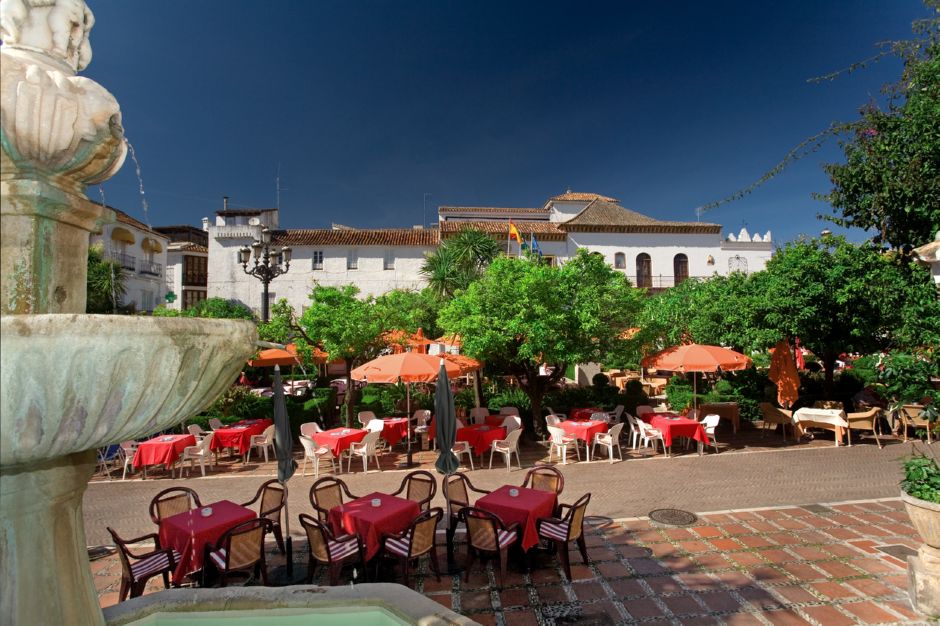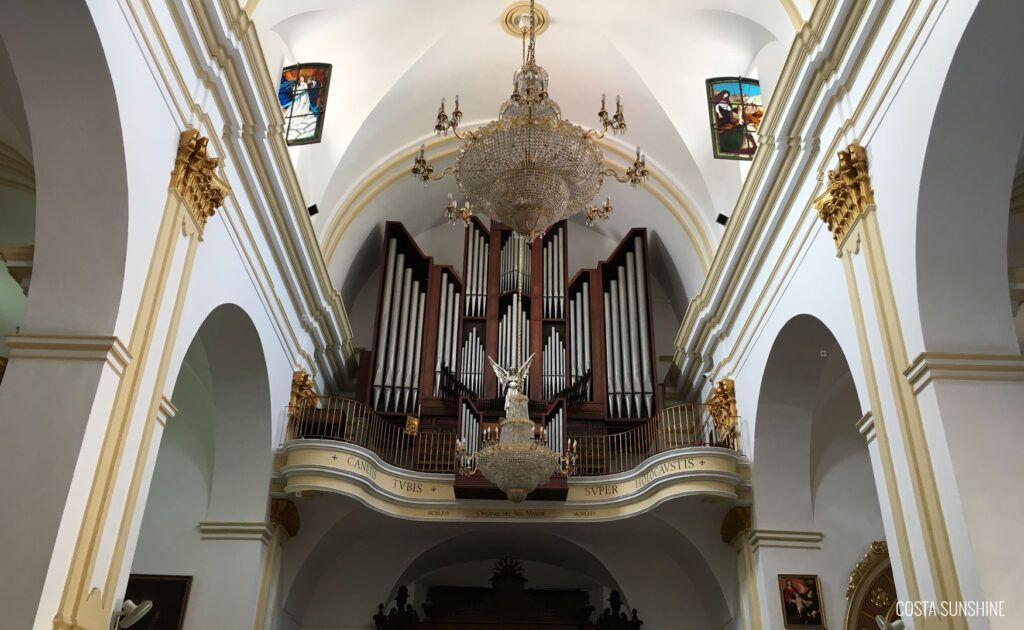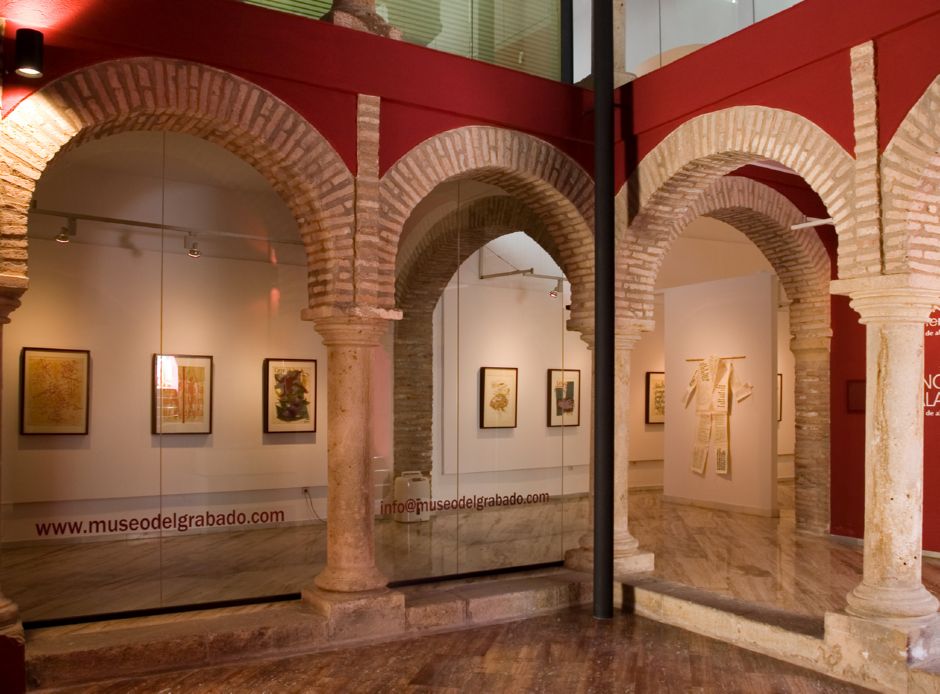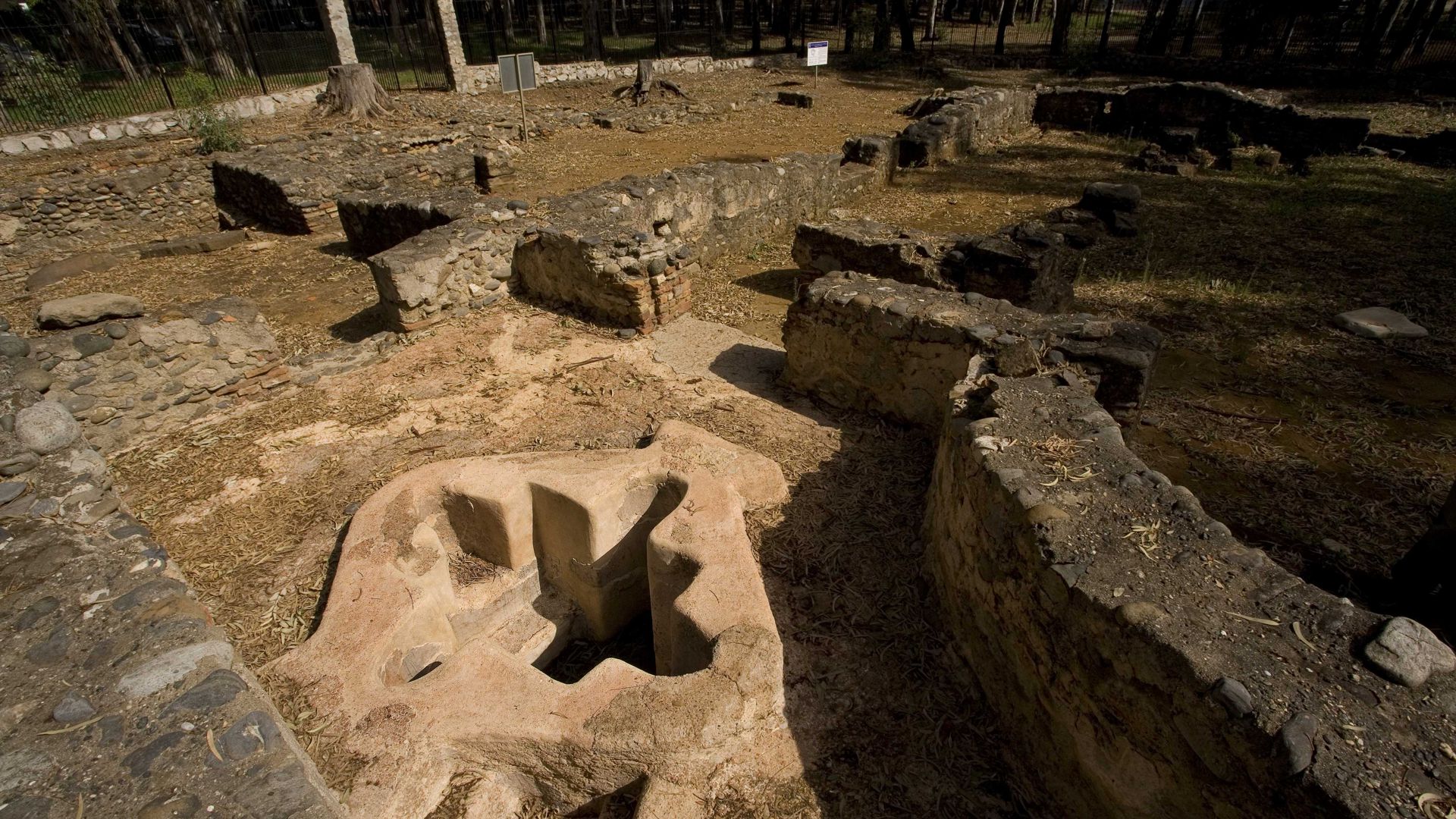|
The Plaza de los Naranjos is located in the heart of the old town and belonging to the end of the 15th century, it is one of the first Christian designs created after the Reconquest. It was built in accordance with the existing tradition in Spanish cities, but without arcades.
The plaza is framed by typical white Andalusian houses and three historic buildings: the Casa Consistorial, the Casa del Corregidor and the Ermita de Santiago.
In the center of the plaza, there is a Renaissance fountain surrounded by orange trees, planted in 1941, from which the square now takes its name.
|
|

|
|
You can also find the Capilla de San Juan de Dios and the Hermitage of Santo Cristo de la Vera Cruz, both from the 16th century, and the Iglesia de la Encarnación, dated the 17th to 18th century, close by.
The latter has a basilica plan structure that consists of three naves and a front door, carved in Rococo-style ochre stone, a true masterpiece.
From the outside, the Puerta del Sol, or main door, carved in ochre stone, is in the Rococo style, a work from the second half of the 18th century.
The door leading to the church square is simpler, with a lintel and a dust cover under a blind arch.
Inside, you can find the Major Sun Organ, from 1975, which is considered to be one of the most important organs built in Spain in the 20th century.
|
|

|
|
The historical centre still preserves the remains of the city wall, which enclosed the city during the Muslim period, and the Moorish Castle.
You can see Roman columns embedded into one of the towers, located in Calle Trinidad, which reveals that construction materials from even older buildings were being recycled and re-purposed to create a defence structure.
The Hospital Bazán, located in the vicinity, is home to the Contemporary Spanish Engraving Museum which exhibits works by Picasso, Miró, Tapies, and Chillida, among others. It is a building with a Renaissance character but marked by a notable Gothic-Mudejar imprint. On the outside, there is a watchtower with a hipped roof, located to the southwest and topped by three arches framed by an alfiz (a rectangular molding that frames the exterior of an arch) on its longer side, made of stonework with balusters in the central span, crosspieces and rosettes on the two sides, and small rosettes on the arch threads and shields on the spandrels (area delimited by an arch and the alfiz that frames it); the arch on the shorter side follows a similar structure in its decoration and has a large, eroded shield in its center.
|
|

|
|
An unmissable stop on the cultural tour through Marbella is the Cortijo Miraflores Cultural Centre. This manor was built in 1704 and was fitted with the appropriate facilities to install a sugar cane mill and an animal-drawn oil mill shortly after.
The Oil Museum, the archaeological exhibition, the Municipal Archives’ historical collection, and different exhibition halls are also highlights of this manor. Behind the building, remains of ovens and a cave hermitage, dated between the 8th and 10th centuries, were discovered. In 1756, the building was expanded, and its gardens on the southern side of the estate were designed and planted. However, it wasn't until 1850 that the exotic species that characterize it were introduced, brought by D. Tomás Domínguez Artola, Intendant General of the Philippines, upon his return from these islands. Worthy of mention are the specimens of Cycas Revoluta (Sago Palm, a species native to the Mesozoic Era).
|
|
 |
|
Ralli Museum in Marbella is one of five Ralli museums in the world. The others are in Punta del Este (Uruguay, Santiago de Chile and two more in Caesarea (Israel). It belongs to a non-profit foundation with the aim of displaying the private collection of Mr. Harry Recanati, founder of this and all the other Ralli museums.
The Ralli Museum is dedicated to sharing contemporary Latin American and European art, and the Avenida del Mar, where you can view a collection of bronze sculptures by Bonvicini and designed by Salvador Dalí, are also worth a visit, this arterial road also connects the Marbella Seafront Promenade to the Paseo de La Alameda, designed in the 19th century and which could be called the “city’s historical green area”.
|
|
 |
|
The archaeological sites, like the Basílica Paleocristiana de Vega del Mar in San Pedro de Alcantara, the remains of the Río Verde roman villa in Nueva Andalucía, Las Bóvedas Roman Baths in Guadalmina, or the six Beacon Towers located along the Marbellan coast are also worth visiting.
The Basilica of Vega del Mar is located at the mouth of the Guadalmina River, near Lindavista Beach and a few kilometers from the town of San Pedro de Alcántara. At the beginning of the 20th century, the remains of the ancient Paleochristian Basilica were discovered, as well as the remains of an aqueduct and a necropolis associated with the basilica.
|
|
 |